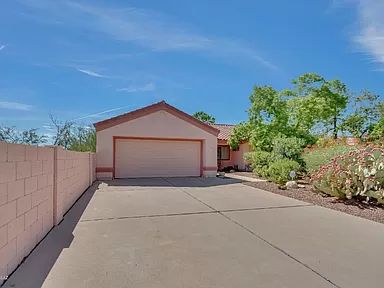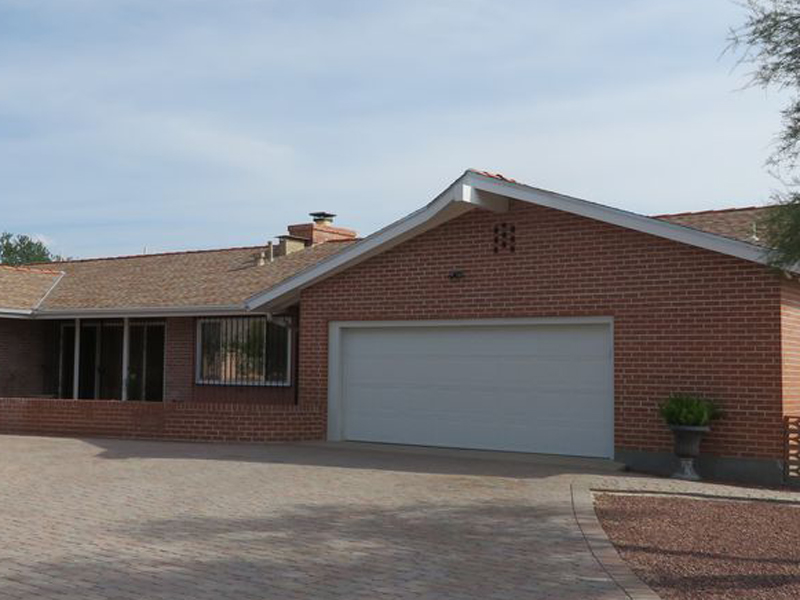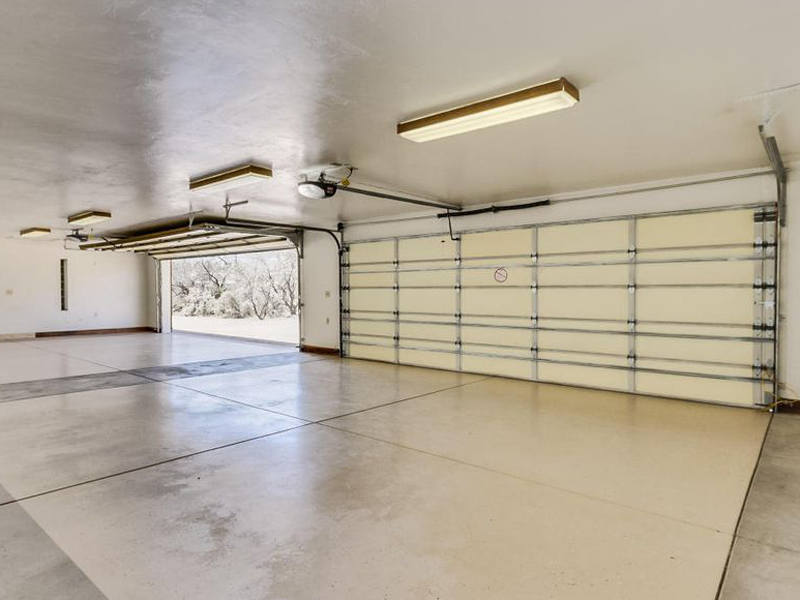Is Your Garage Door Stuck? Here's What to Do First
When your garage door will not open up, begin with these vital safety and security checks prior to attempting any repairs. Initially, make certain no person is standing near the door which automobiles are free from the opening. Seek obvious signs of damages like busted panels, bent tracks, or hanging wires. If you see a snapped spring or badly harmed elements, quit quickly and call an expert—-- these repair services require customized devices and competence to handle securely.

Inspect These 6 Things Before Calling a Professional
Prior to thinking you need costly fixings, go through this quick diagnostic checklist that fixes most garage door troubles:
-
Power source: Verify the opener is connected in and the electrical outlet is working
-
Remote batteries: Replace dead batteries in your remote control
-
Hand-operated lock: Inspect if someone mistakenly engaged the hand-operated lock
-
Obstructions: Look for particles obstructing the door's path or sensing units
-
Emergency release: Ensure the red emergency situation cord hasn't been drawn
-
Circuit breaker: Verify the garage circuit hasn't tripped
These easy checks deal with approximately 70% of garage door concerns without calling for expert intervention.
10 Usual Factors Your Garage Door Will Not Open
Recognizing why your garage door opener isn't functioning assists you pick the ideal solution. Here are one of the most frequent reasons home owners experience:
Dead remote batteries stand for the simplest repair—-- when batteries die, the remote can not send signals to the opener. Power interruptions or tripped breakers reduced power to the motor. Busted springtimes avoid the door from lifting properly and require prompt specialist interest. Sensing unit misalignment causes security systems to obstruct door operation. Track obstructions stop rollers from moving smoothly. Electric motor overload triggers automatic shutoffs when the opener detects resistance. Restriction button problems puzzle the opener regarding door position. Cable damages interrupts the lifting mechanism. Weather-related concerns impact door movement throughout severe temperatures. Part wear from age gradually minimizes system performance.
Problem # 1: Dead Push-button Control Batteries
When your wall switch functions yet your remote doesn't, dead batteries are generally the culprit. A lot of garage door remotes utilize either 3-volt lithium or 12-volt alkaline batteries. Get rid of the back cover of your remote and examine the battery type. Change with fresh batteries and evaluate the remote. If it still doesn't work, you might need to reprogram it to your opener. Consult your opener's manual for details reprogramming directions, as the process varies by producer.
Issue # 2: Power Supply Issues
Garage door power troubles often stem from loose links or tripped circuits. Check that the opener is strongly connected into its outlet—-- resonance can loosen up links over time. Evaluate the outlet with an additional device to verify it's working. Analyze your home's breaker box for tripped circuits, particularly if you have actually experienced tornados or power fluctuations. GFCI outlets may have tripped and need resetting. If the opener has power however will not respond, the problem most likely lies elsewhere in the system.
Trouble # 3: Broken or Damaged Springs
Busted garage door springtimes are among the most dangerous elements to take care of. If you hear a loud bang from your garage or see the door really feels very hefty when trying to raise manually, a springtime has actually likely broken. Torsion springs run flat over the door, while expansion springs rest on either side. Never ever attempt springtime repair services on your own—-- these parts keep incredible stress that can cause serious injury or death. Specialist replacement normally costs $150-$300 but ensures your security.
Issue # 4: Obstructed Security Sensors
Modern garage doors include security sensors that prevent closure when objects are discovered. These sensors can quit the door from opening up if they're filthy, misaligned, or blocked by debris. Tidy sensing unit lenses with a soft towel and make certain nothing blocks the unseen beam of light between them. Examine that sensors are appropriately straightened—-- many have sign lights that show link standing. Sensor issues typically solve with basic cleansing and modification.
Trouble # 5: Track Obstructions or Damages
Garage door tracks guide rollers as the door moves up and down. Dust, particles, old oil, or tiny objects can jam the system. Check tracks aesthetically and eliminate any obstructions with a brush or cloth. Search for damages, flexes, or bending that could impede smooth procedure. Minor track modifications are possible for useful homeowners, but substantial damage needs professional repair service to prevent more troubles or safety hazards.
Trouble # 6: Garage Door Opener Motor Issues
When the garage door motor runs but the door doesn't relocate, a number of issues could be liable. The electric motor might be strained and shutting off as a precaution. Equipment wear, particularly in older devices, can prevent correct procedure. Chain or belt drive issues affect power transmission. If you hear uncommon grinding, clicking, or humming sounds, stop utilizing the opener right away. Motor repairs typically cost more than substitute, particularly for systems over ten years old.
Detailed Do It Yourself Troubleshooting Overview
Follow this systematic approach to garage door fixing while focusing on security throughout the process:
Action 1: Test the wall surface switch initially. If it functions however the remote doesn't, focus on remote issues. If neither works, check power supply.
Step 2: Check out the hands-on release cord. If it's been pulled, the opener is disengaged from the door. Press the cart back to reconnect.
Action 3: By hand test the door by disengaging the opener and attempting to raise the door by hand. It needs to move smoothly and stay in area when half-open.
Tip 4: Inspect visible parts for damage, paying special interest to springs, cables, and tracks.
Tip 5: Check all security features consisting of sensing units, limit buttons, and auto-reverse functions.
Step 6: Examination different controls (remote, wall button, keypad) to separate the problem resource.
Constantly use shatterproof glass and work gloves when doing examinations, and never ever attempt fixings on springs or high-tension components.
When to Call an Expert vs. do it yourself Solutions

Understanding when to call a garage door expert versus trying do it yourself repair work shields both your safety and your pocketbook. Deal with these problems on your own: dead remote batteries, power supply troubles, minor track cleaning, sensor cleansing and positioning, and fundamental lubrication.
Never ever attempt these repairs on your own: springtime replacement or modification, cord repair work, significant track adjustment, electric wiring problems, opener motor substitute, or any type of repair service including high-tension components. Expert service technicians have actually specialized devices, training, and insurance to deal with dangerous repair work safely.
Think about repair expenses versus replacement expenses, particularly for doors over 15 years old. Modern garage doors offer better safety attributes, power effectiveness, and reliability than older designs.
Emergency Garage Door Solutions
When you're stuck to a garage door that won't open and need instant gain access to, adhere to these emergency procedures:
Handbook Procedure: Draw the red emergency release cord to disengage the opener. This enables hand-operated procedure however requires appropriate method to prevent injury. Lift the door gradually and uniformly, utilizing leg muscular tissues instead of your back. Most residential doors evaluate 100-150 extra pounds, making them workable for many grownups.
Momentary Fixes: If the door opens up by hand yet won't keep up, prop it open with sawhorses or clamps—-- never ever use your body or cars as assistances. For doors that won't close completely, guarantee the opening is protected if you have to leave.
Emergency Service: Several garage door business supply 24/7 emergency situation solution for circumstances involving safety problems, caught cars, or complete system failings. While more pricey than routine service phone calls, emergency fixings provide prompt services when required most.
Safety and security Caution: What NOT to Do
Garage door safety requires recognizing dangerous repair work that ought to never be tried by house owners:
Never ever try to repair springs—-- they store sufficient energy to cause fatal injuries when they snap or are poorly taken care of. Do not force a stuck door—-- this can damage the opener, tracks, or door panels, developing extra expensive problems. Prevent bypassing safety and security attributes—-- sensing units and auto-reverse systems protect against significant injuries and residential property damages.
Do not overlook strange noises—-- grinding, scuffing, or banging audios show problems that aggravate gradually. Never ever make use of the door if cords are frayed or broken—-- the door might fall suddenly. Do not try electric repair work unless you're a certified electrical contractor—-- garage door openers make use of both 120V house present and low-voltage control circuits.

Preventive Maintenance to Avoid Future Problems
Regular garage door upkeep protects against most usual problems and expands system life-span significantly:
Monthly Tasks: Aesthetic examination of all components, testing auto-reverse security functions, inspecting and tightening up equipment, and cleaning tracks and sensing units.
Quarterly Tasks: Oiling all relocating get rid of ideal garage door lubricating substance, testing manual operation, and checking weather sealing.
Yearly Jobs: Expert evaluation and tune-up, spring modification if required, and opener maintenance consisting of belt or chain adjustment.
Seasonal Jobs: Planning for weather condition extremes, examining insulation, and changing opener settings for temperature level modifications.
Consistent upkeep prices much less than emergency situation repairs and makes sure trustworthy operation year-round.
Garage Door Won't Open FAQs
Why will not my garage door open with the remote yet collaborates with the wall surface switch?
This typically suggests dead remote batteries, signal interference, or the demand to reprogram the remote. Check batteries initially, then consult your opener handbook for reprogramming guidelines.
Can I manually open my garage door if the power is out?
Yes, pull the red emergency situation launch cord to disengage the opener, then raise the door manually. Be gotten ready for the door's full weight and lift with correct strategy to avoid injury.
Exactly how do I understand if my garage door spring is damaged?
Indications include a loud bang from how to safely adjust garage door spring tension the garage, the door feeling extremely hefty when raising by hand, visible gaps in the springtime coils, or the door only opening a couple of inches before quiting.
Is it safe to utilize my garage door if it will not open completely?
No, partial procedure shows mechanical problems that can worsen all of a sudden. Quit making use of the door and have it checked by a professional to avoid further damage or injury.
What should I do if my garage door opens however won't shut?
Examine safety and security sensing units for obstructions or misalignment, take a look at the tracks for debris, and test the auto-reverse feature. If these don't resolve the trouble, get in touch with an expert.
How much does it cost to repair a garage door that will not open up?
Prices differ extensively relying on the issue: battery replacement ($5-$10), specialist medical diagnosis ($50-$100), springtime replacement ($150-$300), or opener replacement ($200-$500).
Can weather affect my garage door's ability to open up?
Yes, extreme cold can thicken lubes and affect steel elements, while warmth can trigger development issues. Many troubles solve as temperature levels stabilize, but relentless concerns might need expert focus.
Why does my garage door open a couple of inches after that quit?
This normally suggests broken springs, limit button issues, or track blockages. The opener's safety functions quit operation when resistance is spotted, protecting against damages to the electric motor or door.
Get Professional Aid for Complex Issues
When do it yourself troubleshooting does not settle your garage door troubles, specialist service technicians give the experience and devices required for safe, long lasting repairs. Qualified professionals identify problems properly, utilize manufacturer-approved parts, and offer guarantees on their job.
Expert solutions consist of: thorough system assessments, springtime and cord substitute, opener repair work and replacement, track positioning and replacement, electrical troubleshooting, and emergency situation solution phone calls.
What to anticipate: in advance rates, accredited and insured specialists, same-day service for lots of repair services, and follow-up upkeep referrals.
Many garage door business use complimentary quotes for major repairs and can give immediate remedies for immediate troubles impacting home safety or lorry access.
Getting Your Garage Door Working Again
A garage door that will not open doesn't have to spoil your day or break your spending plan. Start with easy troubleshooting steps like inspecting power, replacing batteries, and analyzing for noticeable blockages. Lots of troubles have fast do it yourself services that bring back normal operation within minutes.
Nonetheless, recognize when specialist aid is necessary—-- specifically for spring-related issues, electrical problems, or complicated mechanical failings. Trying harmful repair work on your own runs the risk of major injury and usually creates more costly issues.
Regular maintenance avoids most garage door concerns and guarantees trustworthy operation for many years to find. When issues do occur, address them immediately to stay clear of even more pricey repairs and preserve your home's safety and security and benefit. Whether you need an easy battery substitute or total system overhaul, remedies exist to obtain your garage door working smoothly again.